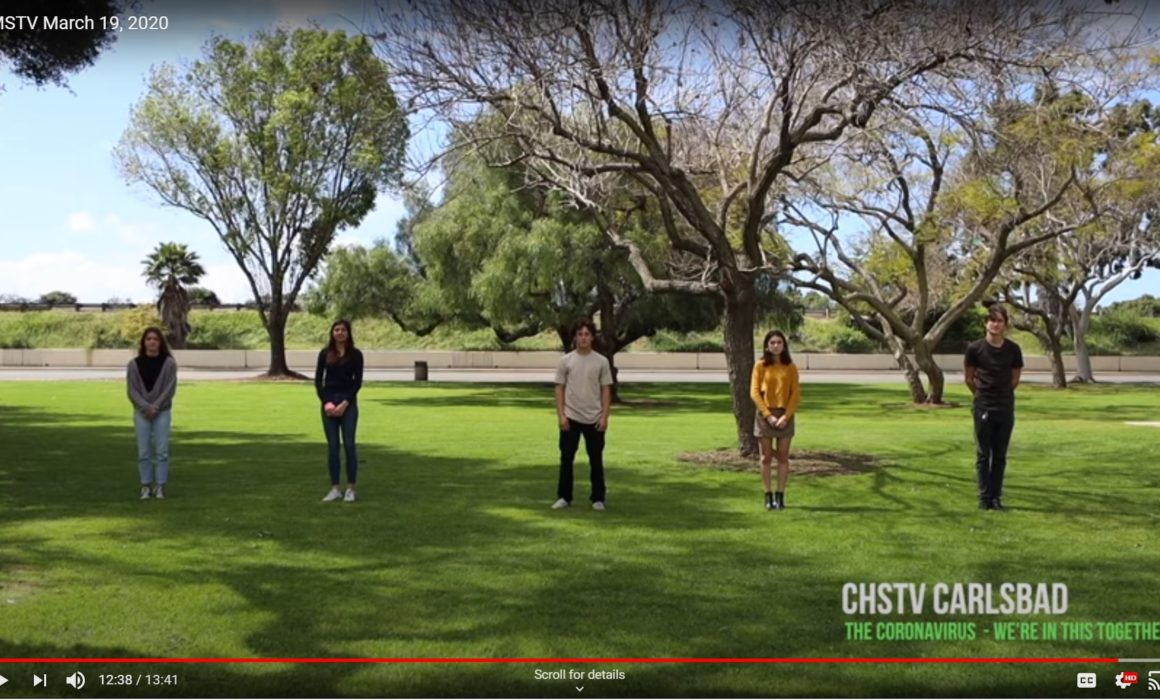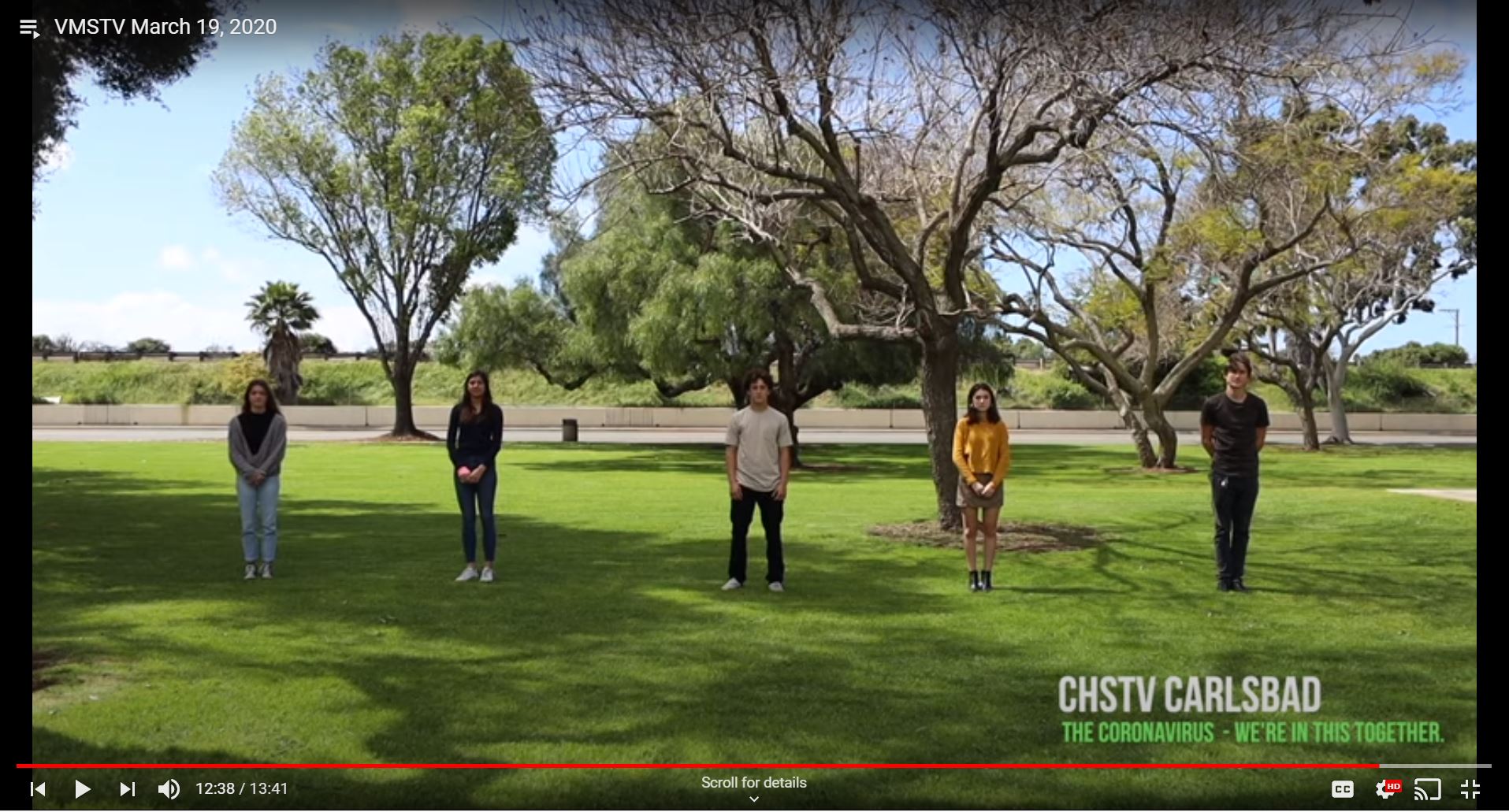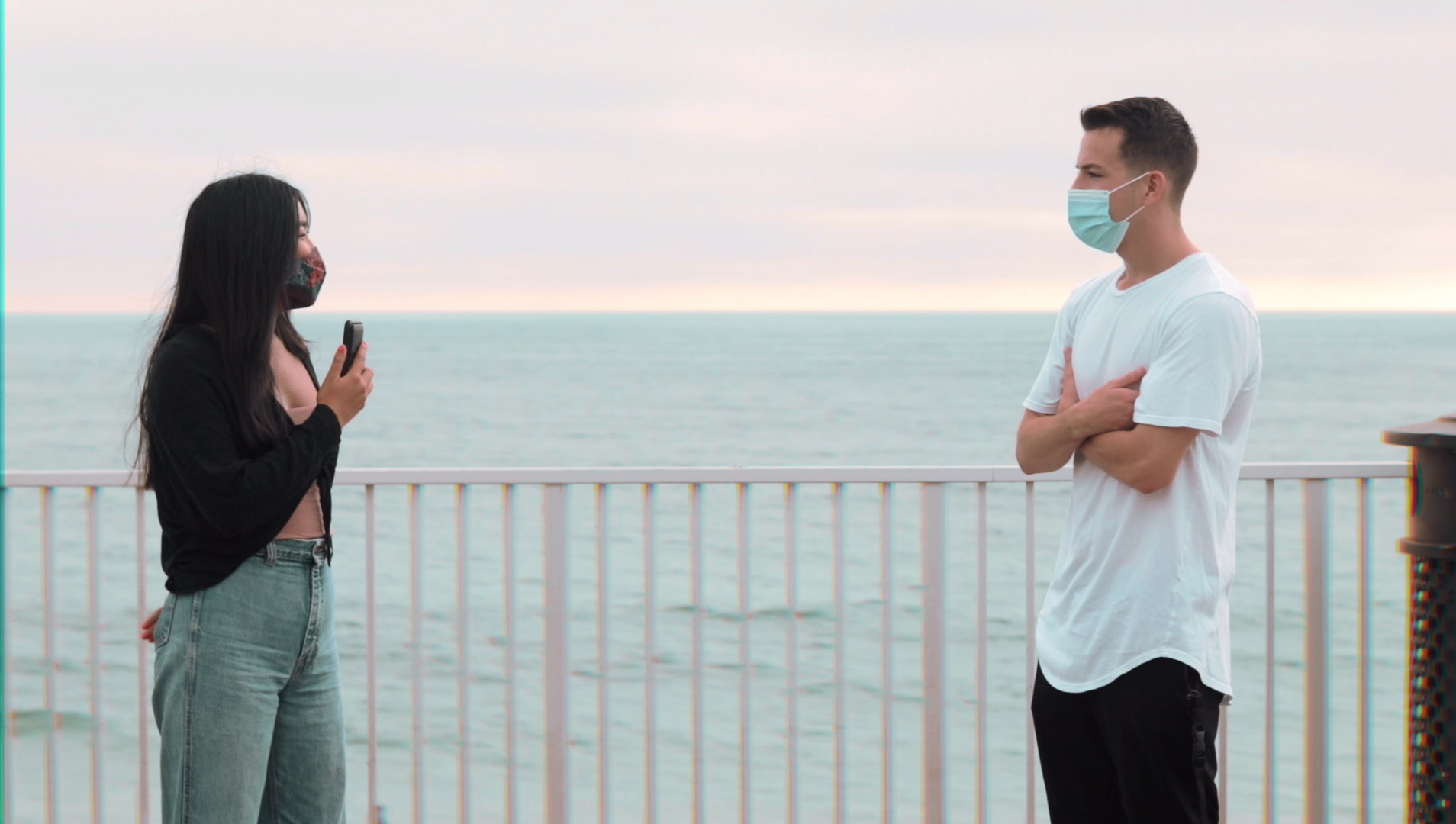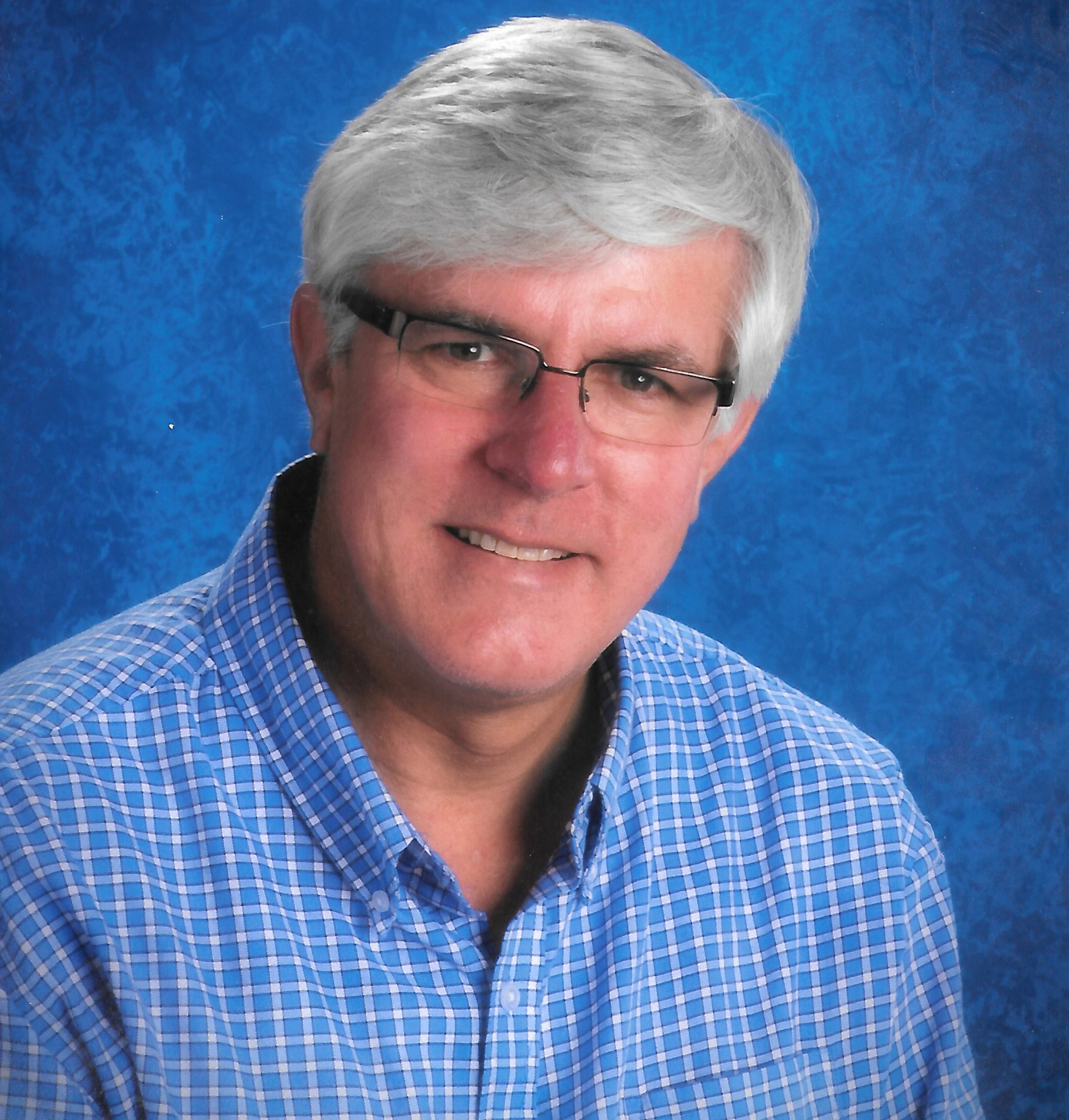
LIKE ALL EDUCATORS dealing with a new way of teaching and learning, Doug Green has been forced to create work-arounds to accommodate pandemic-related constraints. For the broadcast journalism teacher, that means reinventing how his middle and high school students produce their broadcasts, source their stories, conduct their interviews, collaborate with each other, and so on. In the days following the COVID-19 shutdown of schools in March, Green and his students nimbly adapted to the new world and continued to cover important stories in their communities with aplomb — all remotely.

Three days after schools closed in March, Green’s high school students produced a nationally aired PSA on social distancing.
“They highlighted students who were making extraordinary contributions during quarantine, students who remained in the essential workforce, community members rallying to provide food assistance. And they told lighter stories — how-to segments with cooking, crafting tips,” says Green, a member of Carlsbad Unified Teachers Association and a 2016 California Teacher of the Year.
“I have never been prouder of these young journalists and how they worked tirelessly to keep our students and families
connected to their schools, teachers, administrators.”
“While nothing compares to the pre-COVID way, we are finding ways to produce meaningful, relevant broadcasts in spite of the challenges.”
The kids are still at it. Green’s day begins with a student-produced, professional-grade live broadcast at Carlsbad High
School. Then he moves to Valley Middle School to teach and help students produce a weekly broadcast. (Broadcast journalism is a grade 7-12 career pathway.) Both school broadcasts were named “Best in the Nation” last year — Carlsbad High’s program for the 13th time, and Valley Middle’s ninth such honor. In December his high school students won their third Pacemaker Award (called the Pulitzer Prize of student journalism).
Green brought lessons learned last spring to this year’s distance learning classes. Students are focused on “what’s next?” topics such as the reopening of Legoland (a major employer of Carlsbad High students), resumption of school athletics, in-person student cohorts and after-school clubs, parent rallies for and against students returning to school, and more.
While the actual mechanics of his teachings may not be applicable for many educators, the core learnings are. Here are some of them.
 Carlsbad High television reporter Mia Handojo, left, conducts an interview.
Carlsbad High television reporter Mia Handojo, left, conducts an interview.
Develop principles behind the work
“We have three philosophies in my program,” Green says.
1. Journalism offers student journalists a backstage pass to life. For the broadcasting students, this is not a simulation. It is very real-world.
2. Everybody has a story.
3. We are the voice for the voiceless.
Be resourceful
“We’ve adapted. Students conduct conversations with story subjects using videoconferencing and improvise good lighting. They talk to and film people in person while observing social distancing and capture good sound with camera-mounted microphones or fixed mics on mic stands. They turn their home television screens into interactive touch screen monitors to enhance their stories. They record their voiceovers using cellphones. One student taped a microphone to a broom handle. Whatever it takes!”
Use existing tools
“We have two things working in our favor. Firstly, a powerful story can be told with a cellphone. Students learn right away how to take maximum advantage of their cellphones to shoot quality video and capture quality audio.
“During the school closures, we produced segments where we demonstrated for the general student body how to use their cellphones to achieve professional quality video (how to frame a shot, how to light a shot, achieve quality audio, how to
find a compelling background). We did this out of necessity since we were asking for viewer-submitted content for our broadcasts, and we did not want to sacrifice production value.
“Secondly, we model our storytelling after professionals like NBC’s Steve Hartman and KARE’s Boyd Huppert. We also learn from the work of ESPN’s E:60 broadcast. Every Carlsbad student has a school-issued Chromebook, and we have been experimenting with the online editing website WeVideo. Editing with a Chromebook is not ideal, but it is doable; iMovie is a free editing app for iOS phones.”
Use tools that are simple and widely available
“We depend on Google Classroom for much of [what we do] — polling for story ideas using Google Forms; brainstorming ideas using Google Docs; signing up students to report, anchor, shoot, edit and produce using Google Sheets; Google Drive for uploading, downloading and sharing large video files. “We use Zoom for producer meetings and FaceTime for quick check-ins. Much student-to-student communication is done through social media channels — that seems to be the technology of choice for the kids. [We use Google Hangouts] to collaborate and conduct interviews.”
Practice safety
“We take special care of video equipment (cameras, microphones, tripods) and sanitize those items between student use.”
“The challenges are more technical than anything else, and while nothing compares to the pre-COVID way, we are finding ways to produce meaningful, relevant broadcasts in spite of those challenges.”
Watch Valley Middle School and Carlsbad High School’s broadcasts at vmstv.com and chstv.com, respectively. Doug
Green is entering his 30th year as an educator. In addition to teaching, he is involved in scholastic broadcast journalism at a national leadership level.
Telling Fact From Fiction

Doug Green
FOR DOUG GREEN, helping young people become “highly news literate” is at the heart of what he and the broadcast journalism program do. He revels in the firsthand experience he offers his students. For example, he points to three internationally distributed documentary films they’ve produced in the last 11 years. “Our most recent film, Invisible Threat, provided students with a powerful, real-world experience as they learned to analyze source material (websites, news articles) while questioning the various websites’ biases.” They examined “anti-vaccine websites that were funded by alternative health product manufacturers, [and sites] that link the MMR vaccine to autism even though those claims run counter to the science and discoveries that autism can be identified in utero, far before a child receives their first vaccine.” The film and its students ended up on the front page of the Los Angeles Times. “Students have learned firsthand that they need to question sources and they need to report without bias — that with the privilege of reporting and storytelling comes a responsibility to communicate with their audience truthfully and accurately.”